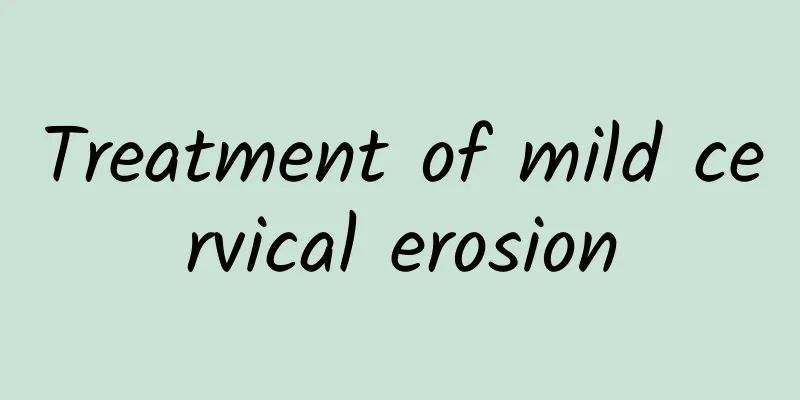Is leg numbness caused by lumbar disc herniation serious?

|
There are many symptoms of lumbar disc herniation. Because it causes nerve compression, it often causes pain, numbness and soreness in the lower limbs. There may also be numbness in the feet. This is mainly because the nerves are stimulated, resulting in an inflammatory reaction. This is especially likely to happen when the weather changes or when you are overworked. At this time, you must check in time and receive good treatment. 1. It is recommended to do CT or MRI of the lumbar spine Patients with numbness in the lumbar spine are advised to go to a local tertiary hospital to take a lumbar spine radiograph. If further diagnosis is needed, a lumbar spine CT or lumbar spine MRI can be performed to confirm the location and extent of the lesion and avoid blind treatment. Then, an orthopedic surgeon can be consulted to make an assessment and future treatment plan. 2. Lumbar disc herniation and leg numbness can be treated with medication If an acute attack of leg numbness caused by lumbar disc herniation affects sleep, you can take some non-steroidal anti-inflammatory drugs orally under the guidance of a doctor, or apply non-steroidal anti-inflammatory suppositories externally into the anus, both of which have a good effect in relieving pain and relieving leg numbness. You can also take some Chinese patent medicines orally that have the effects of promoting blood circulation, removing blood stasis, strengthening the spleen and removing dampness, which can relieve the numbness between the waist and legs to a certain extent. You can also take some nerve nourishing drugs and B vitamins orally, which can serve as an auxiliary treatment. 3. Pay attention to your sleeping posture and mattress Choose a slightly harder mattress, but don't lie directly on a hard board as it is not conducive to blood circulation. Sleeping posture is also very important. When you choose to sleep on your side, put a pillow between your legs to help reposition the lumbar disc. When you choose to lie flat on your back, use as low a pillow as possible and put a pillow under the popliteal fossa of your leg to help relax the spine and help relieve leg numbness. 4. Lie down to rest or change posture frequently It is recommended to lie down and rest when the lumbar disc is acutely attacked. If it is relieved or you are busy at work, you can change your posture frequently. It is best not to sit for a long time. Driving and typing on the computer are the postures that are most harmful to the waist. It is best to get up and move around every 20-30 minutes. In addition, you should avoid bending over to lift heavy objects; do not do heavy physical work or strenuous exercise. 5. You can choose conservative treatment with traditional Chinese medicine There are many methods of conservative treatment in traditional Chinese medicine, but they vary from person to person. Acupuncture and cupping are suitable for people with wind-cold in the body {preferably fire cupping); people with inflammation and edema of the lumbar spine are suitable for local paste medicine, and it is best to apply the paste medicine on the Huantiao acupoint to better relieve leg numbness; if the lumbar disc nucleus pulposus herniation is serious, traction is needed to help reduce the position; people with lumbar disc numbness and leg numbness can also get good results from Chinese medicine massage; if people have dislocation of the lumbar facet joints, they need to be reduced and fixed by a Chinese medicine orthopedic doctor. 6. You can combine physical therapy with some exercises Physical therapy can be performed in the hospital or at home, for 20-30 minutes each time, 1-2 times a day. It is recommended to lift both lower limbs alternately and simultaneously in bed for 20-30 minutes every day; you can also do the small swallow flying exercise and the five-point exercise in bed; you can also hang on the horizontal bar in the community. Doing these movements can increase the strength of the lumbar muscles, relieve symptoms and control attacks. 7. Surgery for patients whose symptoms gradually worsen or do not improve If the symptoms of lumbar cross-leg numbness do not improve or recur after 3-6 months of conservative treatment, you need to go to the hospital for further diagnosis and treatment in time, listen to the advice of orthopedic specialists, and decide whether to continue conservative treatment or require surgical treatment. It is best to visit two or more hospitals before deciding whether to undergo surgery. |
<<: How to treat lumbar disc herniation
>>: How to treat lumbar disc herniation with ozone injection
Recommend
Feeling hot with cold
Feeling hot when you have a cold is very common i...
What are the effects and functions of turmeric?
There are many effects and functions of turmeric....
What are the symptoms of corneal damage?
The cornea is an important part of the eye. When ...
What to do if you have internal heat and bad breath?
People with bad breath, like people with body odo...
Menstrual flow is light but continuous
Irregular menstruation is a problem that troubles...
Causes of non-healing leg wounds
Non-healing wounds are quite common in our daily ...
Reasons why hair falls out easily
Modern people often have less hair and a high hai...
How to treat breast folliculitis?
Folliculitis is a disease that the human body is ...
Nature and flavor of Citrus aurantium and its meridians
Citrus aurantium is a Chinese herbal medicine and...
Traditional Chinese medicine treats arrhythmia, these folk remedies cure serious diseases
Many middle-aged and elderly people have symptoms...
A "stick" helps you spend the summer safely
In summer, the ground is full of yang heat, and q...
Is it okay to take a bath with ginger water during confinement?
A woman is relatively weak after giving birth and...
Are mole crickets poisonous?
Mole crickets are indeed poisonous, but the venom...
Ten Fingers Connected to the Heart teaches you how to identify diseases from your fingers
We often hear people say "the ten fingers ar...
What is posterior pharyngeal follicular hyperplastic pharyngitis?
Severely polluted living environment, long-term w...









